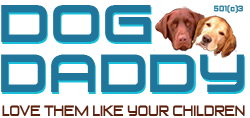Dogs are born to work for a living. They’ve worked alongside us for thousands of years, and most are bred for a particular purpose, like hunting, herding livestock or providing protection. Dog’s wild relatives spend most of their waking hours scavenging and hunting for food, caring for offspring, defending territory and playing with each other. They lead busy, complex lives, interacting socially and solving simple problems necessary for their survival.
The most common job for our companion dogs today, however, is Couch Potato! They no longer have to earn their keep and instead have to adjust to our more sedentary lifestyles. They get their food for free in a bowl and are often confined, alone and inactive, for most of the day. This lack of purpose leaves dogs no outlet for their naturally active tendencies-physical and mental-and it contributes to the development of behavior problems.
Another problem modern dogs face because they rarely work anymore is a lack of opportunities to exercise. Some pet parents make the mistake of assuming that if a dog has access to a yard, she’s getting exercise. But your dog doesn’t run laps by herself in your yard-or do much of anything besides waiting for you to come outside or let her back inside. It’s the interaction with you that counts!
Problems That Result from Lack of Exercise and Play
Dogs can be like young children. If you don’t give them something constructive to do with their energy, they’ll find something to do on their own-and you may not like it! Some of the most common behavior problems seen in dogs who don’t get enough exercise and play are:
- Destructive chewing, digging or scratching
- Investigative behaviors, like garbage raiding
- Hyperactivity, excitability and night-time activity
- Unruliness, knocking over furniture and jumping up on people
- Excessive predatory and social play
- Play biting and rough play
- Attention-getting behaviors like barking and whining
Benefits of Exercise and Play
The good news is that keeping your dog healthy, happy and out of trouble with daily exercise is a lot of fun and provides many benefits, including:
- Helps to reduce or eliminate the common behavior problems listed above, such as digging, excessive barking, chewing and hyperactivity
- Helps to keep dogs healthy, agile and limber
- Helps to reduce digestive problems and constipation
- Helps timid or fearful dogs build confidence and trust
- Helps dogs feel sleepy, rather than restless, at bedtime or when you’re relaxing
- Helps to keep dog’s weight under control
Before You Start Your Dog’s Exercise Program
Check with your dog’s veterinarian before starting an exercise program. He or she can check your dog for any health issues that may be aggravated by exercise and suggest safe activities. Some size, breed and age considerations are:
- Breeds that are prone to bloat that is, deep-chested, narrow-bodied breeds, such as German shepherd dogs, Doberman pinschers and Great Danes should not be exercised right after meals.
- Small or short-legged dogs usually don’t need as much walking as larger dogs.
- Breeds with short or flat noses (brachycephalic breeds) can have trouble breathing when exercised vigorously.
- Sustained jogging or running is not recommended for young dogs whose bones haven’t finished growing. Because large dogs are more prone to cruciate ligament injuries, arthritis and hip dysplasia, sustained jogging can be hard on their joints and bones, too.
- Sighthounds, like greyhounds and whippets, are built for short-distance sprinting, not long-distance runs.
To learn more about sports nutrition for dogs, I spoke recently with Dr. Joseph Wakshlag, a professor of clinical nutrition and sports medicine at Cornell University College of Veterinary Medicine in Ithaca, N.Y., and the author of a comprehensive new review about nutrition for active dogs, published in Veterinary Clinics of North America: Small Animal Practice. Among its many tidbits of knowledge, the article notes that dogs are endowed with more endurance-related muscle fibers than cats, making them better running companions; competing in a Frisbee or agility competition is, for a dog, glorious fun but relatively little exercise, requiring only about 25 percent more calories than lying on a rug; and consuming sports drinks tends to cause dogs to empty their intestines soon afterward, often with little warning.
This is all useful information, as were Dr. Wakshlag’s replies to my questions. What follows are excerpts from our conversation.



Leave A Comment
You must be logged in to post a comment.